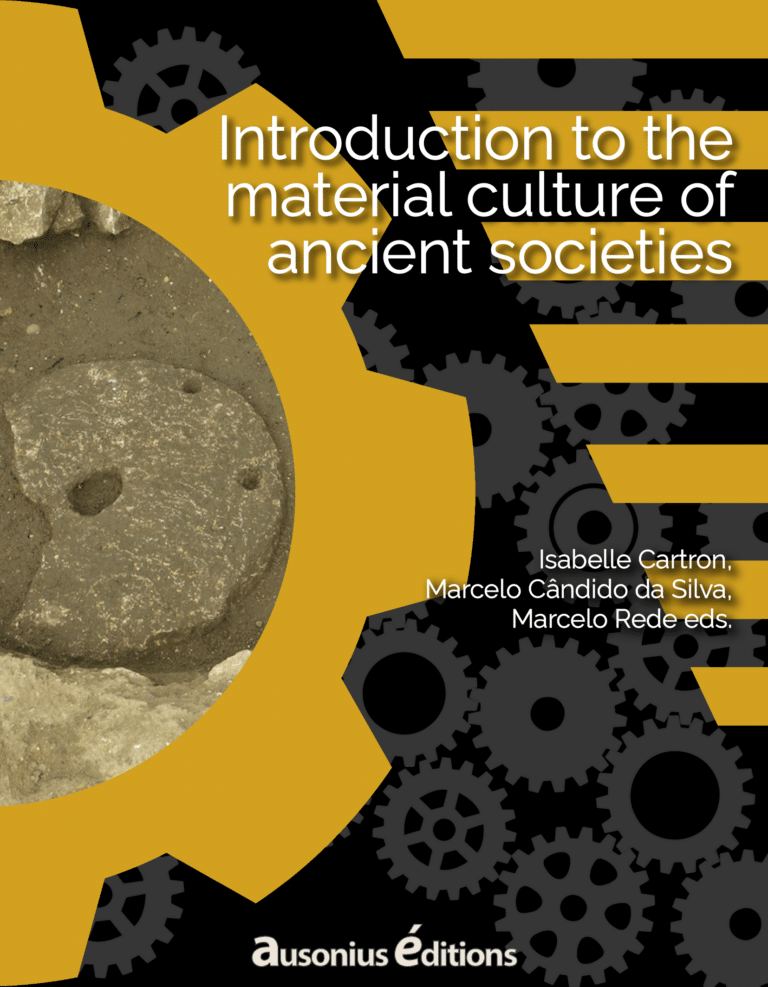La Confiserie is an archaeological site located about 20 kilometres from the north of Paris. It was part of a peasant settlement built in the early Carolingian period. The operations carried out by the archaeologists revealed a rather isolated habitat, since there is no evidence of connections with the commercial networks of long distance or of any specific social status.1 The zooarchaeological remains of the site depict a livestock practice linked to agriculture and without variety of species, focusing exclusively on members of the domestic triad during the 8th-9th centuries, with the absence of hens and geese. Though meat is not normally present in a peasant diet, except when the animal dies or can no longer be exploited, this data can show us some aspects of the settlement through the choices made in animal husbandry. The animal vestiges recovered from the site are largely dominated by bovines. This is not due to the production of meat, but to use the oxen as draft animals. The small number of swine remains corroborate with this view, since they do not offer any product other than meat, therefore demanding maintenance until the age of slaughter, thus being more costly to keep. Overall, La Confiserie presents a poor picture in terms of cattle raising, even when compared to other peasant sites such as La Chapelle/La Croix Verte.2 The paleobotanical data do not differ from what was common for peasant settlements of the period.3 The isolated nature of the site, along with poor livestock during the first phase of occupation, may be signs of vulnerability towards the food crises described during the Carolingian period.


© I. Abadie, Inrap, 2013.
Perhaps, the most direct sign of this vulnerability was found in a 9th century silo containing the remains of at least three human bodies. Two of them were found together in the earliest stratigraphic layer of the silo, one of the individuals was an adult, whose age cannot be estimated, the other was a child between 3 and 6 years old. Silos are not burial structures, but stocking places to store food and, once deactivated, it disposes domestic waste. Beyond that, the bodies were found with most of their bones being absent. The two remaining had cutting marks and fractures, the adult seems to have had his ribs and leg removed. In addition, the remains show signs that they were resting in open space before being buried. At last, the adult has small carbonization stains, indicating partial exposition to fire.4 This set of evidences is hard to put together, it does not seem like a burial, since the structure is not used for it. And, in this case, it would be expected to find the complete skeletons. It also does not resemble an attempt at cremation, given that only a few bones have burn marks and the exposure to fire was partial. How to explain the lesions and stains? A controversial, yet valid explanation would be seeing these data as a survival cannibalism case. Cannibalism is a recurring motif in the written sources of the Early Middle Ages,5 although it was never detected in the archaeological record. Cannibalism or not, La Confiserie is still a rather destitute site according to zooarchaeological data. However, other peasant sites, like the one in Les Ruelles, which were in association with an elite habitat, display a far more comfortable situation,6 hinting that famine might be more related to the right of access to food than with availability.


References
- Abadie, I. et al., 2008: “Le cadre de l’intervention”, in: Gentili, dir. 2008, 6-29.
- Abadie, I. et al., 2013: “Traces d’interventions anthropiques sur des restes osseux humains déposés dans un silo du haut Moyen Âge, Revue archéologique d’Île-de-France, 6, p. 185-222.
- Bonnassie, P., 1989: “Consommation d’aliments immondes et cannibalisme de survie dans l’Occident du haut Moyen Âge”, Annales. Économies, Sociétés, Civilisations, 44-5, p. 1035-1056.
- Foucray, B., 1996: “Les Ruelles de Serris: habitats aristocratique et paysan du Haut Moyen-Âge (fin VIIe/Xe siècle)”, Ruralia, 1, p. 203-210.
- Gentili, F. et al., 1998: Le Mesnil-Aubry (Val-d’Oise), “La Croix-Verte” “LaChapelle” Habitat rural du Haut Moyen Âge (IXe-XIe siècles), RFO, Association pour les fouilles archéologiques nationales.
- Gentili, F., dir., 2008: Villiers-le-Bel (Val-d’Oise) “La Confiserie” 72, avenue Gambetta, RFO, Inrap Pantin.
- Jouanin, G. & Yvinec, J.-H. 2008: “Étude archéozoologique du site de Villiers-le-Bel (Gambetta 2004 et Confiserie 2005 (VIIIe – XVIe s.), in: Gentili, dir. 2008, 156-177.




